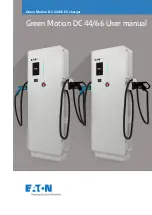
GETTING TO KNOW YOUR CAR
43
jury, even mortal, regardless of
the seriousness of the crash that
triggered it. Children may be
placed on the front seat of cars
fitted with passenger’s air bag de-
activation.
In this case, it is absolutely nec-
essary to check the warning light
“
on the cluster to make sure de-
activation has actually taken
place (see paragraph Front and
side air bags at item Front air
bags). The front passenger seat
shall be adjusted in the most
backward position to prevent any
contact between child’s seat and
dashboard.
For optimal protection in the event
of a crash, all passengers must be seat-
ed and wearing adequate restraint sys-
tems.
This is especially relevant for chil-
dren.
This prescription is compulsory in all
EC countries according to EC Direc-
tive 2003/20/EC.
A child’s head is larger and heavier
than an adult’s head with respect to
their body weight. Moreover, a child’s
head muscular and bone structure is
not fully developed. For these reasons,
children require specific restraint sys-
tems, different from those required by
adult passengers.
The results of research on the best
child restraint systems are contained
in the European Standard ECE-R44.
This Standard enforces the use of re-
straint systems classified in five groups:
Group 0
weight 0-10 kg
Group 0+
weight 0-13 kg
Group 1
weight 9-18 kg
Group 2
weight 15-25 kg
Group 3
weight 22-36 kg
The groups partially overlap. This is
because there are systems which cov-
er more than one weight group
fig. 65
.
fig. 65
F0B0193b
Summary of Contents for Ulysse
Page 1: ......
Page 63: ...GETTING TO KNOW YOUR CAR 62 CLIMATE CONTROL SYSTEM fig 83 fig 83 F0B0247b ...
Page 173: ...IN AN EMERGENCY 172 fig 37 F0B0148b fig 38 F0B0149b ...
Page 174: ...IN AN EMERGENCY 173 fig 39 F0B0154b ...
Page 249: ...248 N NO OT TE ES S ...
Page 250: ...249 ...
Page 251: ......
Page 252: ......
Page 254: ......
















































